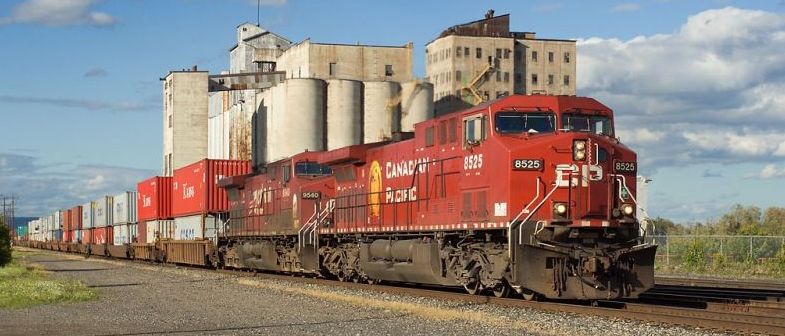
Train Addiction Help Line: 1.866.840.7777
Walthers Proto - HO Scale - EMD GP35 Phase II - DCC w/Sound - Erie Lackawanna (EL) #2563 - Gray/Maroon/Yellow/Black (SKU 920-42156)
Available On: March 1, 2017

The early 1960's were a time of great change in railroading. The industry was changing, but so too were the locomotives moving the trains. Many railroads had first generation diesels that were nearing the end of their service lives and were not powerful enough to match increased demands. It was a three way race between ALCo, EMD and GE. ALCo had the successful RS series which was used by many railroads, while GE was building the thoroughly modern U-boats.
The answer for EMD was the GP35, a new four axle Geep powered by the EMD 567D3A 2,500 horsepower 16-cylinder engine. EMD also made the GP35 more appealing to railroads by taking in trade ins of older ALCo and EMD units. In many cases, the trucks and traction motors from the older units were reused in the new GP35's. These units were produced from mid-1963 until early 1966 by EMD or the GMD division with over 1300 built for all markets, the vast majority going to U.S. railroads.
The GP35 included a new cab design that differed from previous EMD locomotives and would become with minor differences, the cab used on future locomotives until the wide cabs took hold and replaced them. The locomotive had a easy spotting feature in the long hood fan arrangement where a single 36 inch fan is bracketed by two 48 fans.
There are also two phases of this locomotive. For most of the units built, the GP35 has a frame similar to earlier GP and SD units with a thick mid-section and thinner ends over the trucks, marking them as Phase I. However, as EMD was continuing research and development, the GP35 Phase II was produced with the frame changed to an all one thickness design that went on to become the standard frame profile for future EMD products.
These locomotives went on to have long and successful service lives. As late as the early 2000's, BNSF has more than 100 still in service and even today examples are in use in short line operations.
Features:
- Fully assembled and ready to run
- Sharp painting and printing
- Road-specific details
- Multiple road numbers available in DCC Ready & DCC w/SoundTraxx Tsunami sound
- Five-pole, skew-wound, high-torque, high-efficiency can motor
- Helical gears with 14:1 ratio for smooth, ultra-quiet running
- Easy multiple-unit operation
- Proto MAX metal knuckle couplers
Based on units in service August 1965 to Conrail merger with:
- Standard dynamic brake hatch
- Four jack pads
- 2700-gallon fuel tank
- Tall "can" air filter/dryer

$299.98 US